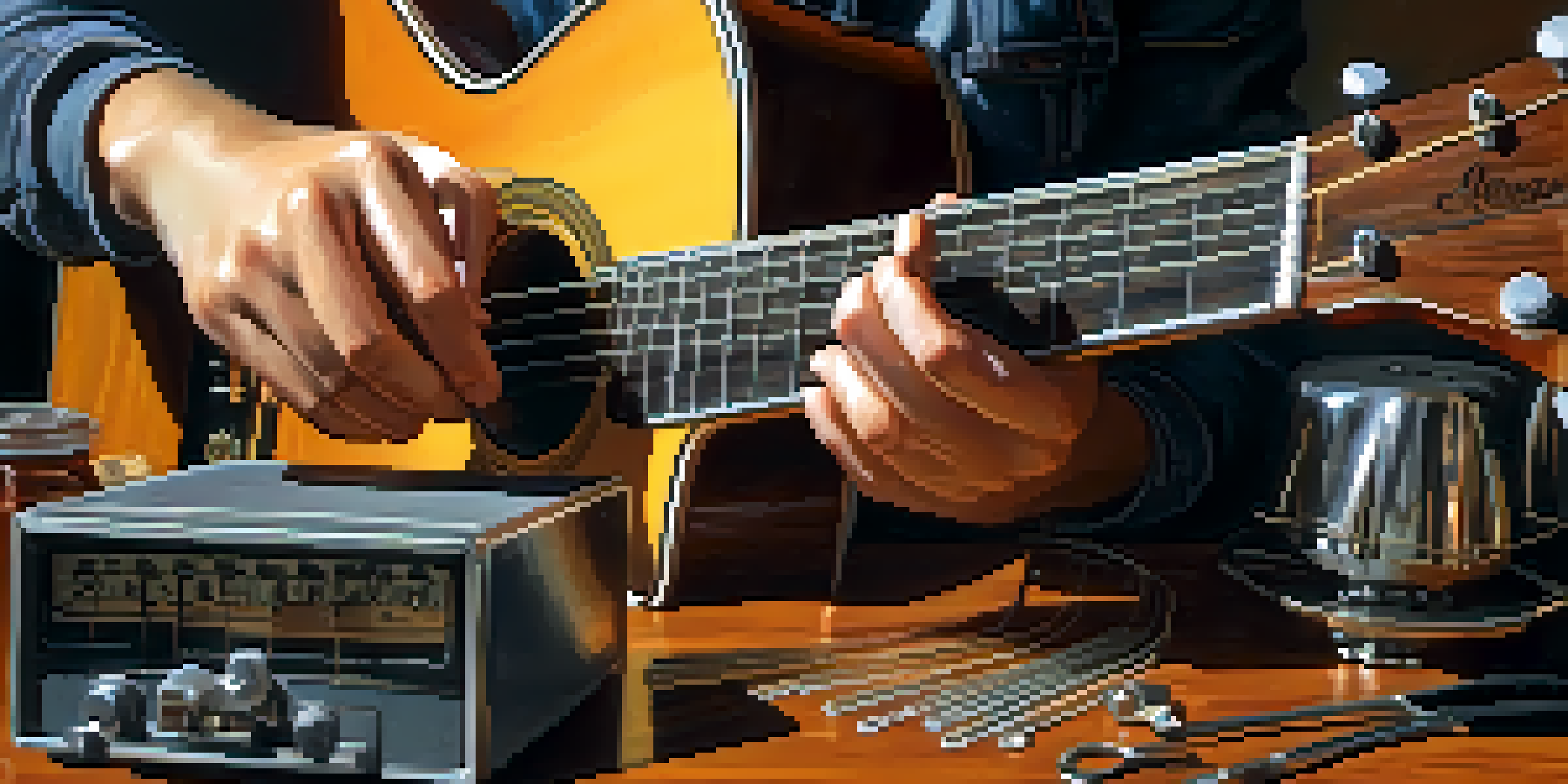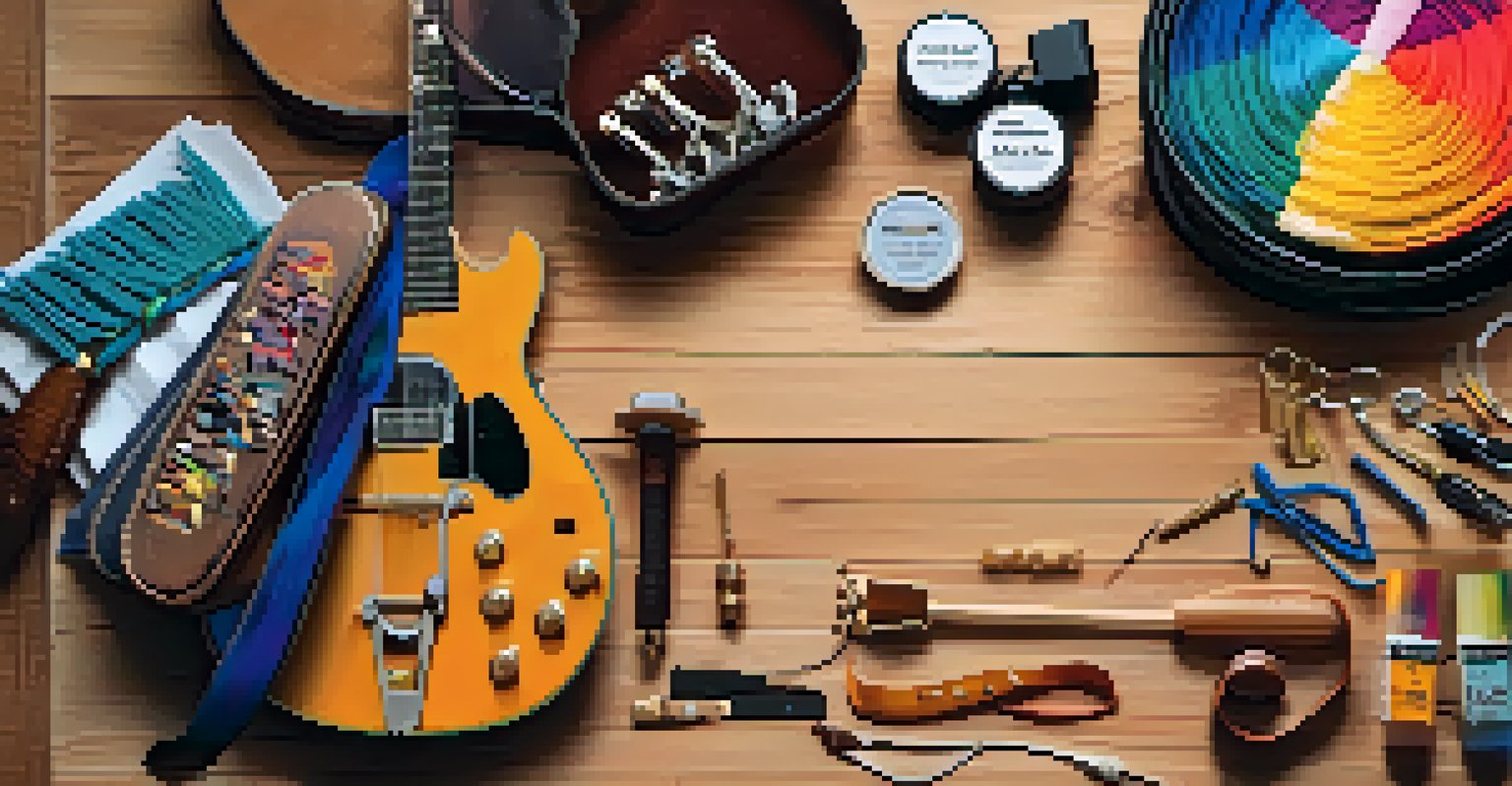How to Change Guitar Strings: A Step-by-Step Guide

Why Changing Guitar Strings is Important for Your Sound
Changing your guitar strings is crucial for maintaining a great sound. Old strings can sound dull and lifeless, which can affect your playing experience. Fresh strings not only enhance tone clarity but also improve tuning stability, allowing you to focus on your music.
The music is not in the notes, but in the silence between them.
Imagine trying to play your favorite song, but the strings are so worn out that they just won't stay in tune. Frustrating, right? Regularly changing your strings can prevent this from happening, letting you enjoy every note without the hassle of tuning issues.
Related Resource
Additionally, new strings can inspire creativity. Sometimes, the brightness of fresh strings can spark new ideas, leading to exciting musical breakthroughs.
Gathering Your Tools for String Changing
Before diving in, it's essential to gather the right tools. You'll need a set of new strings, a string winder (optional but helpful), and some wire cutters. A tuner is also beneficial for getting everything back in tune afterward.

Think of this preparation like packing for a road trip. The more organized you are, the smoother the journey will be. Having everything within reach will make the string changing process much quicker and more straightforward.
Fresh Strings Enhance Your Sound
Regularly changing your guitar strings keeps your sound vibrant and prevents tuning issues.
Once you've got your tools ready, you're set to tackle the string-changing process with confidence!
Removing Old Guitar Strings: A Simple Process
To start removing old strings, begin by loosening each one. You can do this by turning the tuning pegs counterclockwise. Once they’re loose enough, you can easily unwind them from the bridge and pull them out of the tuning pegs.
Strings are the soul of a guitar, and their quality can make or break the sound.
Think of this step like unwrapping a gift. You want to be gentle and deliberate to avoid damaging any parts of your guitar. If you feel any resistance, just keep loosening until you can remove the strings effortlessly.
Related Resource
After you've taken off all the old strings, take a moment to clean the fretboard. This is a great opportunity to remove any grime that may have built up while you played.
Choosing the Right Strings for Your Guitar
Choosing the right strings can feel overwhelming with so many options available. Consider your playing style and the tone you wish to achieve. For example, lighter gauge strings are easier to play but may produce a softer sound, while heavier strings can offer more volume and sustain.
It’s a bit like choosing the right pair of shoes for a hike. Some provide more comfort, while others offer more support. Each string type has its benefits, so think about what will work best for your guitar and playing preferences.
Proper Tools Make String Changing Easy
Gathering the right tools beforehand simplifies the string-changing process and ensures a smoother experience.
Don't hesitate to experiment with different brands and gauges until you find the perfect match for you. The right strings can make a world of difference!
Installing New Strings: Step-by-Step Instructions
Now that you have chosen your new strings, it’s time to install them. Begin by feeding the string through the bridge and pulling it up to the tuning peg. Make sure to leave some slack for winding, which helps with tuning stability.
Imagine you’re threading a needle; precision is key. You want to ensure that the string sits properly in the nut and bridge before winding it around the tuning peg. This will ensure a clean and secure fit.
Related Resource
Once you've threaded the string, start winding it around the peg. Make sure to wind it neatly to avoid any tangles, and remember to tune as you go!
Tuning Your Guitar After Changing Strings
After installing the new strings, it's time to tune your guitar. New strings can stretch a bit, so be prepared to tune several times as you play. Start by using a tuner to get each string to the correct pitch.
Think of tuning like setting the stage for a performance. If your guitar is in tune, you're ready to rock! A well-tuned guitar not only sounds great but also makes playing more enjoyable.
Caring for Strings Extends Their Life
Wiping down your strings and storing your guitar properly can significantly prolong their lifespan and maintain sound quality.
Don’t forget to check your tuning regularly, especially in the first few days after changing strings, as they will settle and may require adjustments.
Caring for Your New Strings to Extend Their Life
After you've changed your strings, it's important to take care of them to maximize their lifespan. Wiping them down after each session can help remove oils and dirt from your fingers, which can cause corrosion.
Think of your new strings like a fresh pair of workout shoes. The more you care for them, the longer they'll last. Additionally, try to store your guitar in a temperature-controlled environment to prevent any damage.

By nurturing your strings, you'll enjoy a brighter tone and extended playability, ultimately getting more value out of your investment.